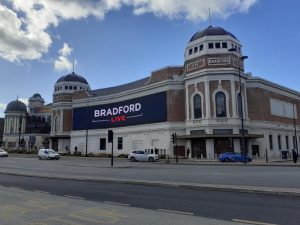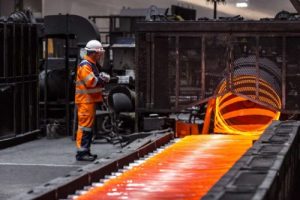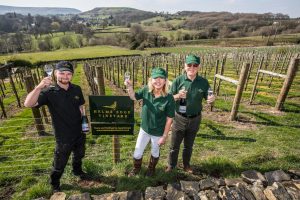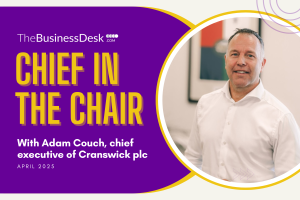Diverse communities demand flexible planning, property experts say

Meeting diverse housing needs requires a flexibility the current planning system is ill-equipped to provide, housing professionals at TheBusinessDesk.com’s latest property round table agreed.
Instead of masterplans that might take six or seven years to create and approve, and would not be reviewed for a further five years, attendees suggested a dynamic planning system monitored and reviewed by independent experts.
The Building a Community round table, sponsored and hosted by Bowman Riley at their Leeds office, brought together developers, architects, financiers, and community advocates to discuss how the property sector is addressing the changing needs and wishes of owners and renters.
Architect Colin Briggs, an associate at Bowman Riley, said Leeds’ most recent policy dated from 2016. “There’s been a pandemic, and they have the three pillars they’re going to achieve by 2030. But the council think the world is still as it was in 2016. Zoopla is saying people want gardens and garages – there’s a massive difference between the demand from people on the ground searching Zoopla versus what the council thinks is still relevant from 2016.”
Lee Savage, director at developers Caddick Group, shared a similar story: a planning officer at an authority he declined to name insisted 25% of an apartment development should be three-bedroom flats to fulfil planning strategy requirements, but developers had found there was insufficient demand for them.
“What you need to do is tabulate how many inquiries there are for three-beds, because that’s housing need,” he said.
He added, “If policy nationally and locally is dynamic, they’d be able to adapt to market forces and new initiatives will gather pace. Demand changes over a period as well, so it will be able to adapt top demand over time.”
Matthew Turnbull, of Keyland Developments, said his local plan had been produced when he was about seven years old. “What we’ve started to do now is that when we’re putting the housing applications in we’re producing evidence documents that prove why the two-, three-bedroom houses are not wanted.”
Paul Thornton, head of land and planning at Crest Nicholson Yorkshire, said working around planning committees increased costs. “We have to plan for it, we have to budget for it. We’re not going to start site in June, because we’re not going to committee in April.”
Beyond the number of bedrooms, people now wanted different features in apartments. “People who live in apartments now want access to outdoor space more than ever,” Samantha Jevons, associate at Bowman Riley, said. “They want a balcony, and a Juliet is not enough. If people are working from home half the week they might want to sit outside on the veranda and get the laptop out.”
A main topic of the discussion was building diverse communities, a broad subject that encompassed finance for both developers and housebuyers, affordable housing, verticals and even the colour of window frames.
“Really, the most important diversity that we need to address from the beginning is political diversity,” said Stephen Boardman, chief executive of affordable home builder Verity Housing Group. “We have to have some buy-in from all the different parties within the local authorities. If we don’t have that, we won’t get anywhere, no matter how innovative we think we’re being.”
Boardman added that to address the wide aspects of diversity, firms should plan which they wanted to tackle first.
Richard Gough, project manager with developers Rushbond, said that on a purely housing level, diverse communities emulated market town textures, with “all sorts of properties and homes and tenure mixed in together.”
Sarah Hart, community led housing hub manager for the North and East Riding with Community First, agreed. She highlighted community involvement in York City Council’s My Future York programme.
“They’ve come together, it’s intergenerational, and actually the community want to crack on and do stuff with York Central. They’re looking at a 15-minute neighbourhood. The community is at the forefront, and actually the strategic team at York Central said they should do it for the whole masterplan.”
“A lot of people want the same things,” Samantha Jevons pointed out. “A sense of community, local public transport links, a local pub. Whether they’re retired, whether they’re affluent, or whether they’re a young family, whatever. And I think we’ve lost a lot of the things in our communities. We’re tryingti build communities where people can move around, live, and have the things they need on the doorstep.”
Gary Woodhead, chief executive of Curveblock, hoped his firm’s energy producing homes would get more people onto the ladder by convincing lenders to accept surplus energy in lieu of mortgage deposits.
“If the renewables are guaranteeing, say, £64,000 over 25 years, they have the opportunity to allow all first-time buyers onto land.”
So far, he said, though banks had warmed to the idea, they were still considering it.
“Lenders aren’t planners, they’re not developers, they’re not builders,” said Mark Heyes, director of property funding specialists IM Capital. “The person making the decision is a lender or an underwriter, so anything they don’t understand they’re just not going to do.”
One area that large lenders were more keen on, Lee Savage of Caddick, said, was ESG, and that could help when financing sites with more green space and renewables – which in turn, helped build sustainable communities.
The Building a Community round table was the first in a short property series sponsored by Bowman Riley and Keyland Developments.









